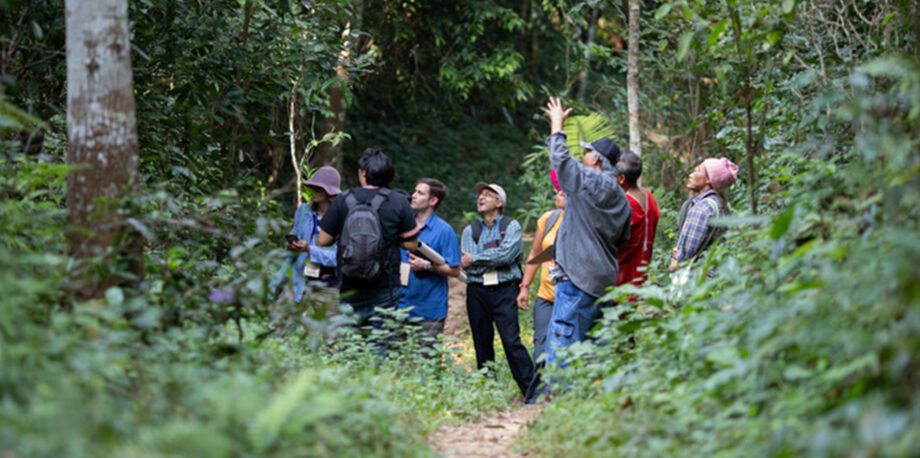April 24, 2019 — When it comes to conservation, it’s tempting to think that science is the only guide to good policy. But biodiversity is linked to culture, argues a new study on pollinator conservation recently published in Nature Sustainability, so we should embrace a diversity of knowledge systems, acknowledging both academic science and traditional cultural practices.
“Indigenous peoples’ and local communities’ knowledge is really grounded in evidence collected over centuries,” says Rosemary Hill, lead author on the study and a principal research scientist with CSIRO, Australia’s national science research agency.
The paper — which builds on the Intergovernmental Science-Policy Platform on Biodiversity and Ecosystem Services (IPBES) — explores how indigenous and local communities around the world approach the conservation of pollinators like bees, birds and bats. Academic researchers reviewed academic and community writings about traditional knowledge pertaining to pollinators, while participating indigenous and local people held dialogues in their communities to decide which parts of their cultural practices to share.
The result is a list of seven policy recommendations for protecting pollinators and respecting the practices of deeply rooted communities that can be applied, not just to pollinator conservation, but to conservation issues more broadly:
- Require informed consent from indigenous people and local communities for conservation and development initiatives. As an example, the researchers point to India’s Forest Rights Act, which they say has ensured forest access for indigenous honey hunters, thus helping to sustain indigenous communities’ knowledge about bee conservation.
- Support customary land management practices. Allowing indigenous people to manage land according to their own practices can strengthen traditional practices that help conservation.
- Bolster indigenous and community conserved areas (ICCAs). These ecosystems are voluntarily conserved by indigenous peoples and local communities with a focus on traditional practices and customs.
- Bring together different forms of knowledge. Efforts to monitor pollinator populations, for example, should consider local indigenous metrics as well as the ways science tracks trends, since people relate to their environment in different ways.
- Promote listing of heritage sites. International organizations such as the United Nations Educational, Scientific and Cultural Organization (UNESCO) document cultural and natural heritage around the world, and the awareness that heritage listing brings to landmarks, areas and cultural practices can aid conservation. The UNESCO Intangible Cultural Heritage List, for instance, lists the traditional knowledge of the Totonac people, an indigenous group in Mexico. Totonac agroforestry protects pollinator habitat and stingless beekeeping.
- Foster environmentally friendly beekeeping. With support from governments, traditional beekeeping practices can sustain people’s livelihoods.
- Champion food sovereignty. Food sovereignty pushes back on industrial agriculture in favor of local farming and agroecological approaches. The researchers say this helps keep landscapes varied and limits use of agrochemicals.
Pasang Dolma Sherpa, executive director of the Center for Indigenous Peoples’ Research and Development (CIPRED), praises the proposals. However, she also argues that policy alone is not enough. She says it’s crucial that indigenous people continue to cultivate pride in their traditional practices, particularly among younger generations, and direct skepticism toward industrialized agriculture involving chemical fertilizers, hybrid seeds and new technologies.
Both Sherpa and the paper pointed to the importance of native languages in sustaining traditional conservation knowledge and strategies. Governments have suppressed indigenous languages in Nepal, the United States and elsewhere across the globe.
“As indigenous persons, my cry is [that] it is very, very important to be educating ourselves on the values that we have contributed” to conservation, Sherpa says, “and also to educate the policymakers … on what we have implemented on the ground.”
Photo: Academic researchers and local experts walk with the bees in the forest surrounding the Hin Lad Nai community in Thailand. Courtesy of J. Bumroongchai
Ensia shares solutions-focused stories free of charge through our online magazine and partner media. That means audiences around the world have ready access to stories that can — and do — help them shape a better future. If you value our work, please show your support today.
Yes, I'll support Ensia!
